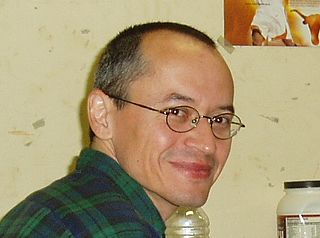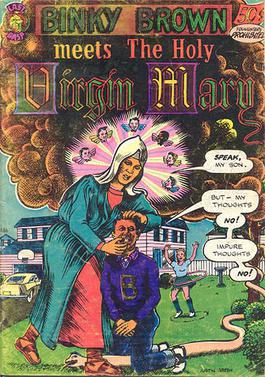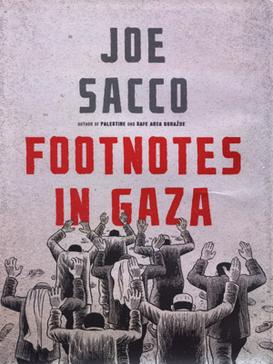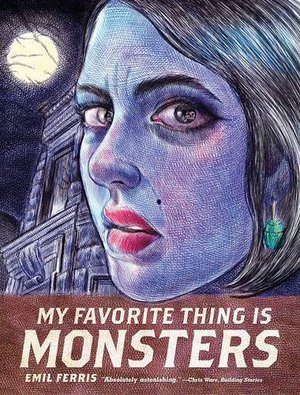A graphic novel is a long-form work of sequential art. The term graphic novel is often applied broadly, including fiction, non-fiction, and anthologized work, though this practice is highly contested by comics scholars and industry professionals. It is, at least in the United States, typically distinct from the term comic book, which is generally used for comics periodicals and trade paperbacks.

Alison Bechdel is an American cartoonist. Originally known for the long-running comic strip Dykes to Watch Out For, she came to critical and commercial success in 2006 with her graphic memoir Fun Home, which was subsequently adapted as a musical that won a Tony Award for Best Musical in 2015. In 2012, she released her second graphic memoir Are You My Mother? She was a 2014 recipient of the MacArthur "Genius" Award. She is also known for originating the Bechdel test.

Itzhak Avraham ben Zeev Spiegelman, professionally known as Art Spiegelman, is an American cartoonist, editor, and comics advocate best known for his graphic novel Maus. His work as co-editor on the comics magazines Arcade and Raw has been influential, and from 1992 he spent a decade as contributing artist for The New Yorker. He is married to designer and editor Françoise Mouly and is the father of writer Nadja Spiegelman. In September 2022, the National Book Foundation announced that he would receive the Medal for Distinguished Contribution to American Letters.

Maus, often published as Maus: A Survivor's Tale, is a graphic novel by American cartoonist Art Spiegelman, serialized from 1980 to 1991. It depicts Spiegelman interviewing his father about his experiences as a Polish Jew and Holocaust survivor. The work employs postmodern techniques, and represents Jews as mice and other Germans and Poles as cats and pigs respectively. Critics have classified Maus as memoir, biography, history, fiction, autobiography, or a mix of genres. In 1992 it became the first graphic novel to win a Pulitzer Prize.

Palestine is a non-fiction graphic novel written and drawn by Joe Sacco about his experiences in the West Bank and the Gaza Strip in December 1991 and January 1992. Sacco's portrayal of the situation emphasizes the history and plight of the Palestinian people, as a group and as individuals.

Joe Sacco is a Maltese-American cartoonist and journalist. He is best known for his comics journalism, in particular in the books Palestine (1996) and Footnotes in Gaza (2009), on Israeli–Palestinian relations; and Safe Area Goražde (2000) and The Fixer (2003) on the Bosnian War. In 2020, Sacco released Paying the Land, published by Henry Holt and Company.
Justin Considine Green was an American cartoonist who is known as the "father of autobiographical comics." A key figure and pioneer in the 1970s generation of underground comics artists, he is best known for his 1972 comic book Binky Brown Meets the Holy Virgin Mary.

Binky Brown Meets the Holy Virgin Mary is an autobiographical comic by American cartoonist Justin Green, published in 1972. Green takes the persona of Binky Brown to tell of the "compulsive neurosis" with which he struggled in his youth and which he blamed on his strict Roman Catholic upbringing. Green was later diagnosed with obsessive–compulsive disorder (OCD) and came to see his problems in that light.
An autobiographical comic is an autobiography in the form of comic books or comic strips. The form first became popular in the underground comix movement and has since become more widespread. It is currently most popular in Canadian, American and French comics; all artists listed below are from the U.S. unless otherwise specified.

Drawn & Quarterly (D+Q) is a publishing company based in Montreal, Quebec, Canada, specializing in comics. It publishes primarily comic books, graphic novels and comic strip collections. The books it publishes are noted for their artistic content, as well as the quality of printing and design. The name of the company is a pun on "drawing", "quarterly", and the practice of hanging, drawing and quartering. Initially it specialized in underground and alternative comics, but has since expanded into classic reprints and translations of foreign works. Drawn & Quarterly was the company's flagship quarterly anthology during the 1990s.

Phoebe Louise Adams Gloeckner is an American cartoonist, illustrator, painter, and novelist.

Robert Sikoryak is an American artist whose work is usually signed R. Sikoryak. He specializes in making comic adaptations of literature classics. Under the series title Masterpiece Comics, these include Crime and Punishment rendered in Bob Kane–era Batman style, becoming Dostoyevsky Comics, starring Raskol; and Waiting for Godot mixed with Beavis and Butt-Head, becoming Waiting to Go.

Fun Home: A Family Tragicomic is a 2006 graphic memoir by the American cartoonist Alison Bechdel, author of the comic strip Dykes to Watch Out For. It chronicles the author's childhood and youth in rural Pennsylvania, United States, focusing on her complex relationship with her father. The book addresses themes of sexual orientation, gender roles, suicide, emotional abuse, dysfunctional family life, and the role of literature in understanding oneself and one's family.

Comics journalism is a form of journalism that covers news or nonfiction events using the framework of comics, a combination of words and drawn images. Typically, sources are actual people featured in each story, and word balloons are actual quotes. The term "comics journalism" was coined by one of its most notable practitioners, Joe Sacco. Other terms for the practice include "graphic journalism," "comic strip journalism", "cartoon journalism", "cartoon reporting", "comics reportage", "journalistic comics", "sequential reportage," and "sketchbook reports".

Footnotes in Gaza is a journalistic graphic narrative by Joe Sacco about bloody incidents between Israelis and Palestinians in Gaza during the Suez Crisis. It was published in 2009 by Henry Holt and Company in the U.S. and Jonathan Cape in the UK.

Sarah Shay Mirk (she/they) is an author, zinester, and journalist based in Portland, Oregon, in the United States.

Emil Ferris is an American writer, cartoonist, and designer. Ferris debuted in publishing with her 2017 graphic novel My Favorite Thing Is Monsters. The novel tells a coming-of-age story of Karen Reyes, a girl growing up in 1960s Chicago, and is written and drawn in the form of the character's notebook. The graphic novel was praised as a "masterpiece" and one of the best comics by a new author.

My Favorite Thing Is Monsters is a two-volume debut graphic novel by American writer Emil Ferris. It portrays a young girl named Karen Reyes investigating the death of her neighbor in 1960s Chicago. Ferris started working on the graphic novel after contracting West Nile virus and becoming paralyzed at age forty. She attended the School of the Art Institute of Chicago for writing and began the graphic novel to help her recover in 2010, taking six years to create 700 pages. The work draws on Ferris's childhood growing up in Chicago, and her love of monsters and horror media. The process of creating the book was difficult, with Ferris working long hours, living frugally, and encountering publishing setbacks, such as a cancelation by one publisher and the temporary seizure of the first volume's printing at the Panama Canal.

Mickey au Camp de Gurs is a 1942 French comic booklet by German-born French cartoonist of Jewish descent Horst Rosenthal. It was created while Rosenthal was a prisoner at the Gurs internment camp in France during World War II. The comic features Walt Disney's Mickey Mouse, who is arrested on suspicion of being Jewish and is sent to Gurs. Rosenthal acknowledged the source of his protagonist by adding "Publié Sans Autorisation de Walt Disney" to the front cover. Rosenthal was detained in Gurs for two years before being sent to Auschwitz in September 1942; he was murdered on the day of his arrival.
















